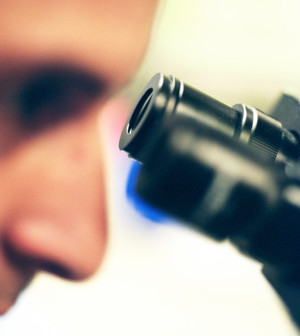- Navigating Your Midlife Crisis: Embracing New Possibilities
- City Raccoons Showing Signs of Domestication
- Mapping the Exposome: Science Broadens Focus to Environmental Disease Triggers
- One Week Less on Social Media Linked to Better Mental Health
- Your Brain Changes in Stages as You Age, Study Finds
- Some Suicide Victims Show No Typical Warning Signs, Study Finds
- ByHeart Formula Faces Lawsuits After Babies Sickened With Botulism
- Switch to Vegan Diet Could Cut Your Greenhouse Gas Emissions in Half
- Regular Bedtime Does Wonders for Blood Pressure
- Dining Alone Could Mean Worse Nutrition for Seniors
Could ‘Star Trek’-Like ‘Tricorder’ for Health Be Near?

“Beam us up, Scotty!”
U.S. researchers say they’ve developed a small, wearable health monitor they’re likening to the “Star Trek” tricorder.
The flexible Chem-Phys patch can be worn on the chest and tracks biochemical and electrical signals in the human body. It then communicates all that wirelessly to a laptop, smartphone or smartwatch, said a team of engineers from the University of California, San Diego.
The device also provides real-time data on electrocardiogram (EKG) heart signals, plus levels of lactate, a biochemical that helps chart physical effort, the team said.
“One of the overarching goals of our research is to build a wearable tricorder-like device that can measure simultaneously a whole suite of chemical, physical and electrophysiological signals continuously throughout the day,” said project co-leader Patrick Mercier, an electrical engineering professor.
Mercier believes the Chem-Phys has a number of potential uses, such as athletes monitoring their training or doctors managing heart disease patients.
“This research represents an important first step to show this may be possible,” he said in a university news release.
Most commercial wearable devices only measure one signal, such as steps or heart rate, and almost none measure chemical signals, such as lactate, Mercier noted.
The next steps include adding sensors for other vital signs and chemical markers, such as magnesium and potassium, he said.
An article describing the device appears in the May 23 issue of the journal Nature Communications.
More information
There’s more on your vital signs at the U.S. National Institutes of Medicine.
Source: HealthDay
Copyright © 2025 HealthDay. All rights reserved.










